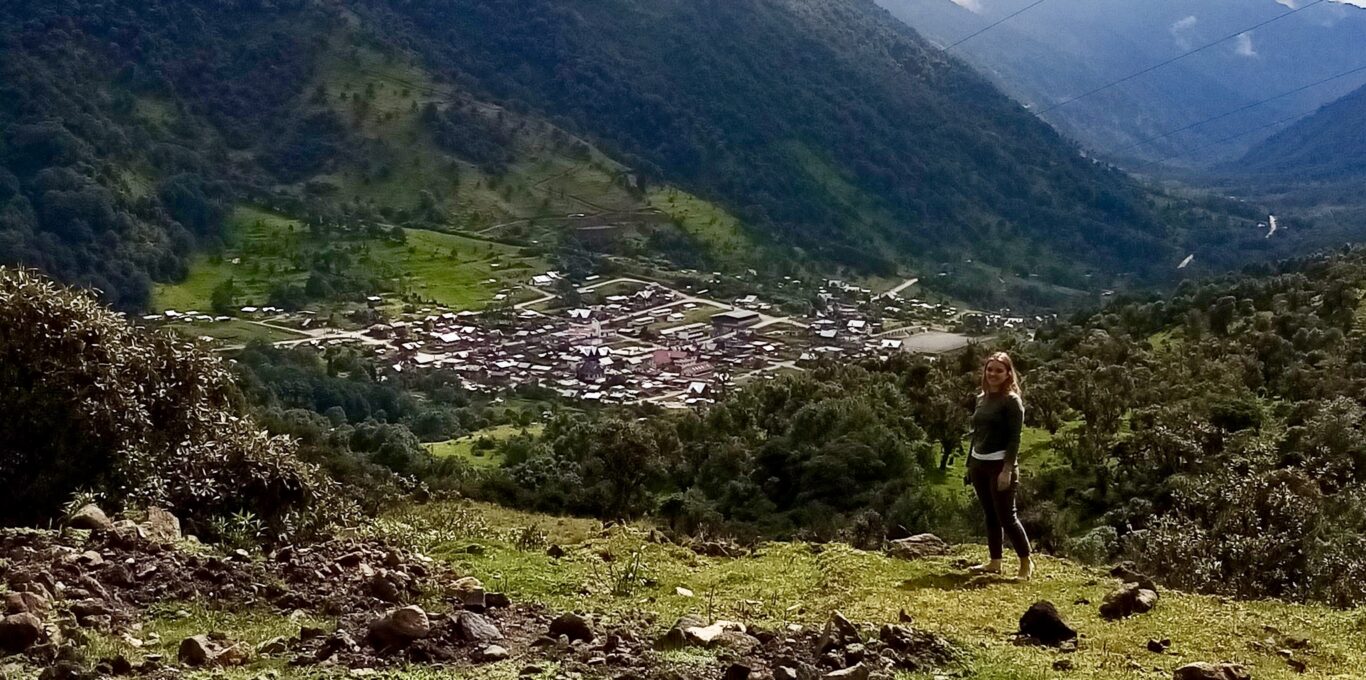This post describes a visit to the small, hidden, beautiful & friendly Andean village of Oyacachi. Located in the province of Napo, Ecuador. Pure nature all around. Ideal spot for Ecotourism.
Sometimes we may think that every wonderful corner of the world receives its visitors. Wrong! There are still many hidden places that make your visit a real off-the-road adventure, like Oyacachi.
Starting point: Cangahua
This time we start our virtual picture tour in Cangahua, Pichincha. Not really a place to stay overnight, but a good starting point for your visit to Oyacachi.
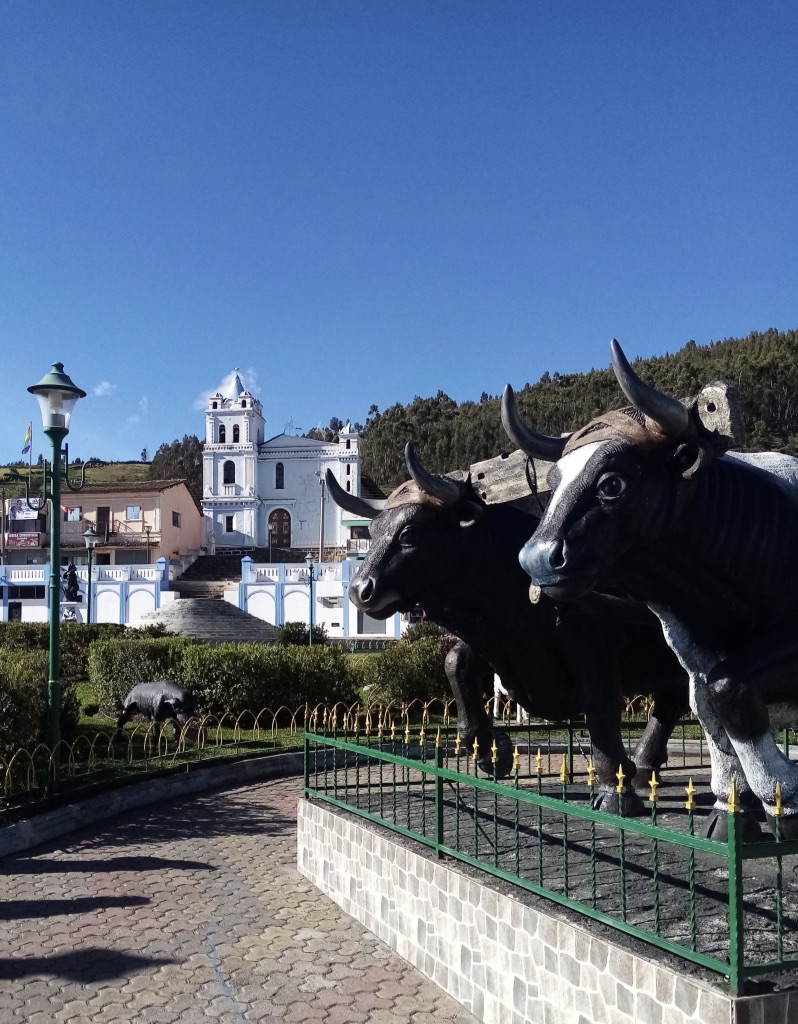
- A perfect base for your day trip to Oyacachi is Otavalo. Only a 30 minute drive from Cangahua. If you chose Otavalo to spend the night, you’re more than welcome in my/our Hotel Doña Esther.
- To read about how I ended up in Ecuador, you can read: About me.
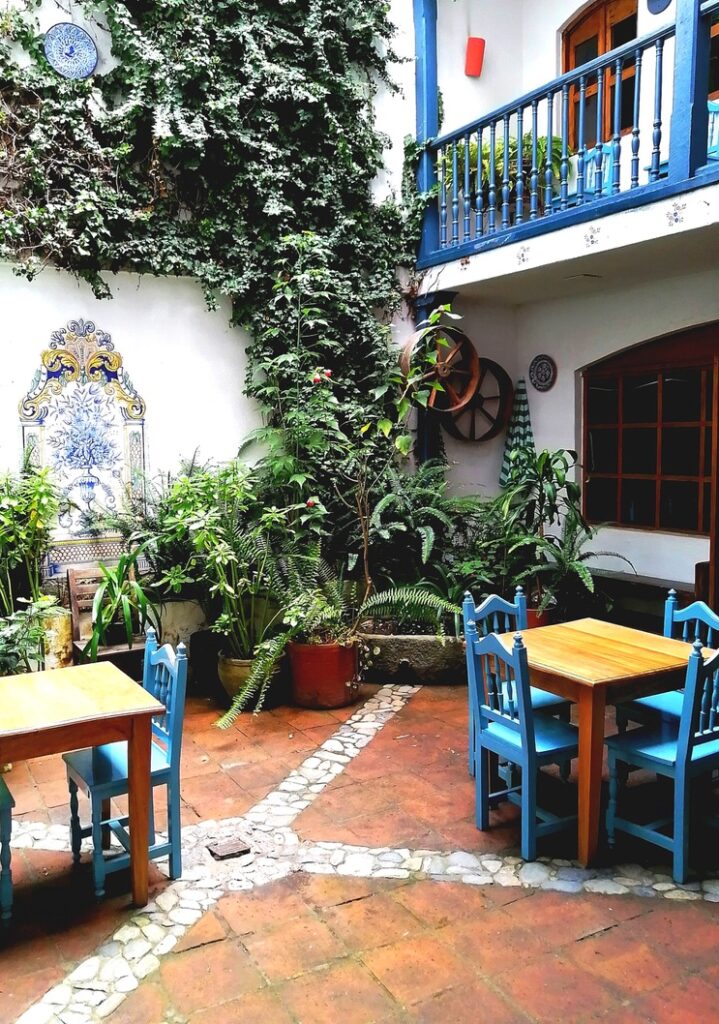
- If you start the day in Otavalo, head out first to Cayambe. Famous for its bizcochos & the alternative Mitad del Mundo.
- After traversing Cayambe & the Equator you’ll have to find the left hand exit to Cangahua. Passing along one of the oldest haciendas of Ecuador: Guachalá. Soon the road begins to climb and brings you in 10-15 minutes to Cangahua (3180m/ 10433ft).
And on …
As in Cayambe, you have to traverse this little village until you’ll encounter the following sign:
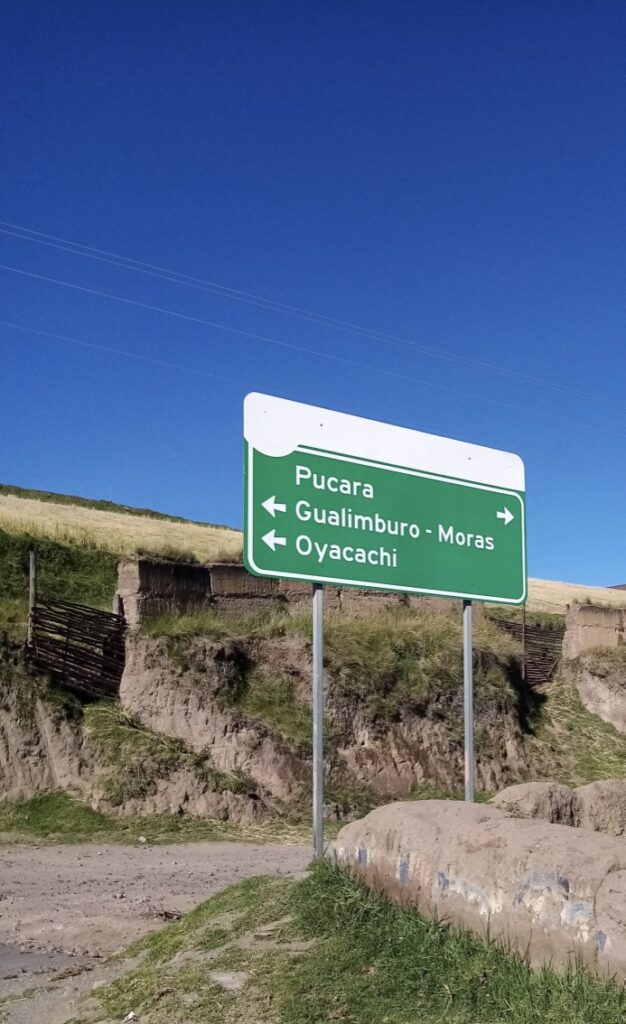
As you can see: to visit Oyacachi, head to the left. To the right though is another interesting option, which I describe in the following post: Pambamarca.
From this sign post to Oyacachi takes around 1 hour plus 20 to 30minutes. The distance is only a little over 30km/ 20miles, but in large part the camino is still a dirt road.
… we go!
Soon you enter a beautiful rural area with wide views. Small farmer houses spread over fertile fields.
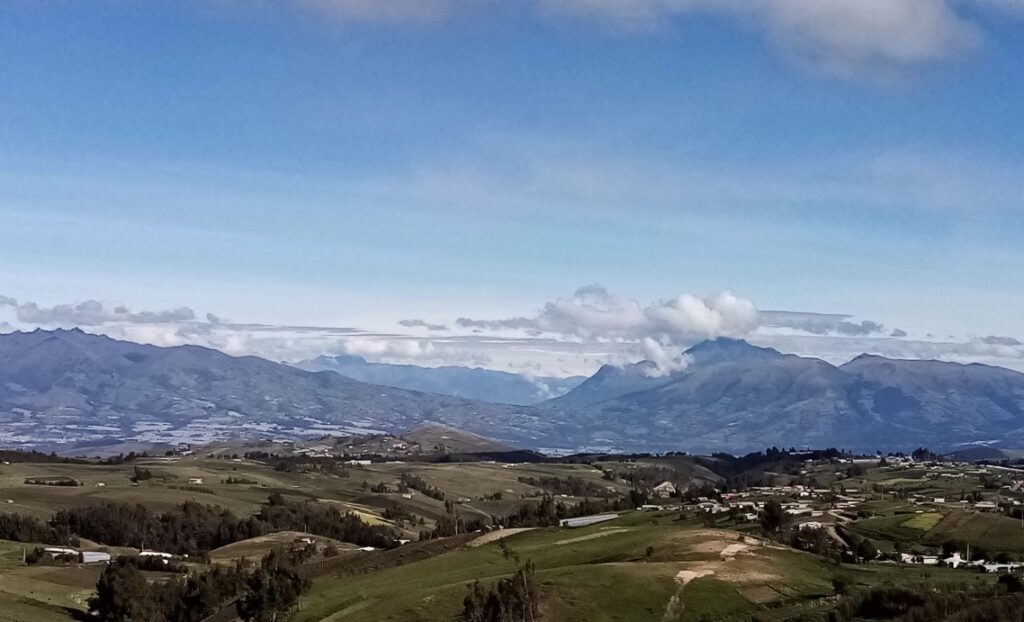
When lucky you can spot the snow-capped Mt. Cayambe (5790m/ 18996ft) in the background.
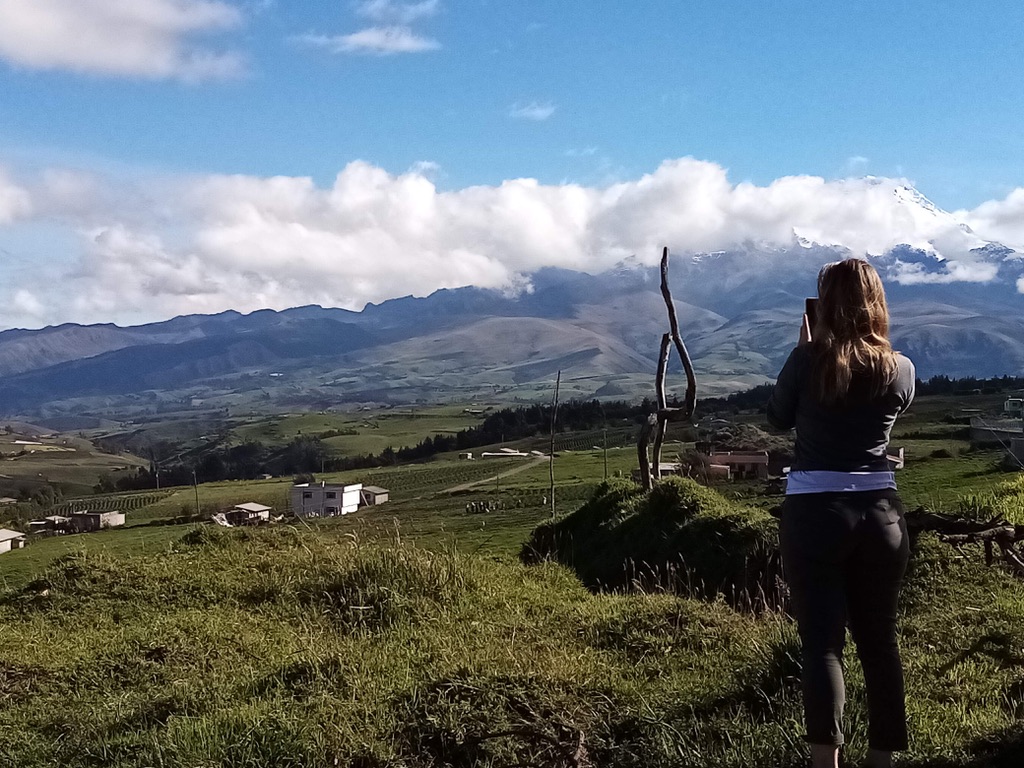
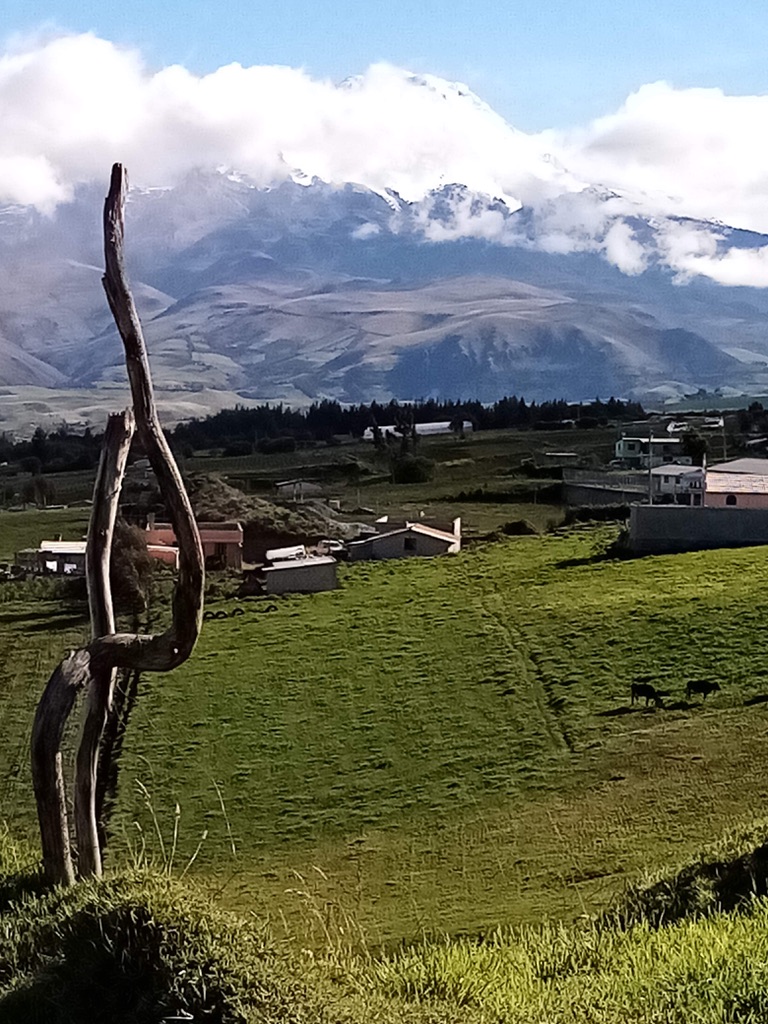
After a while even these small communities are left behind. Making way for pure nature. High hills to the left and right. And deep valleys.
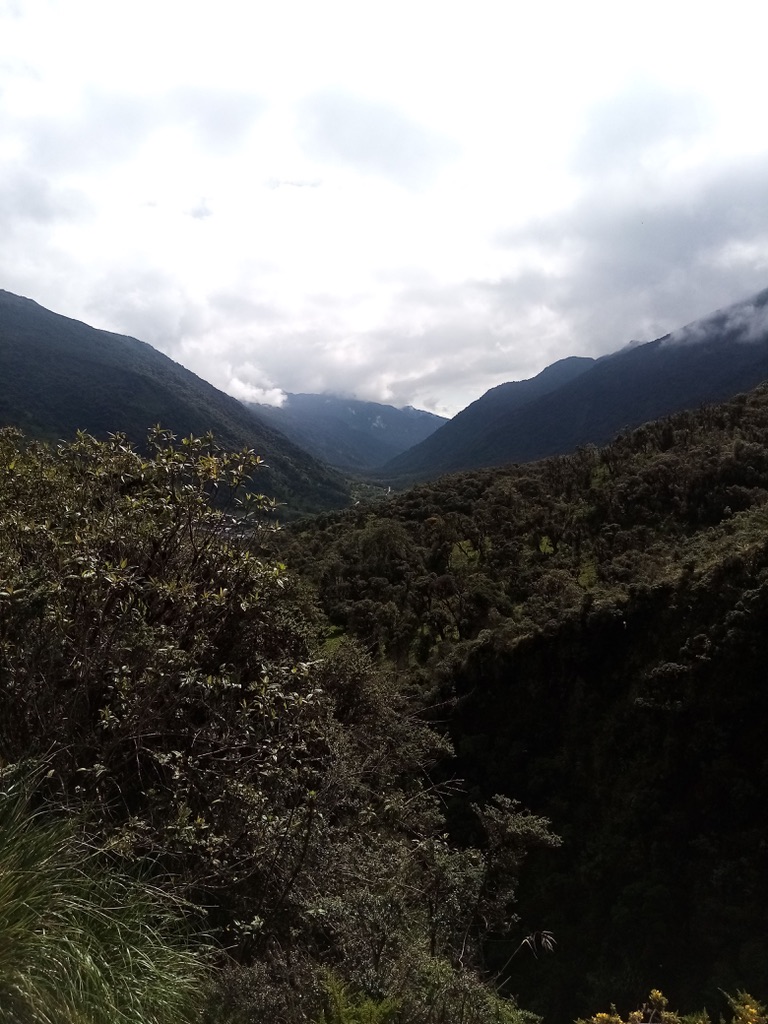
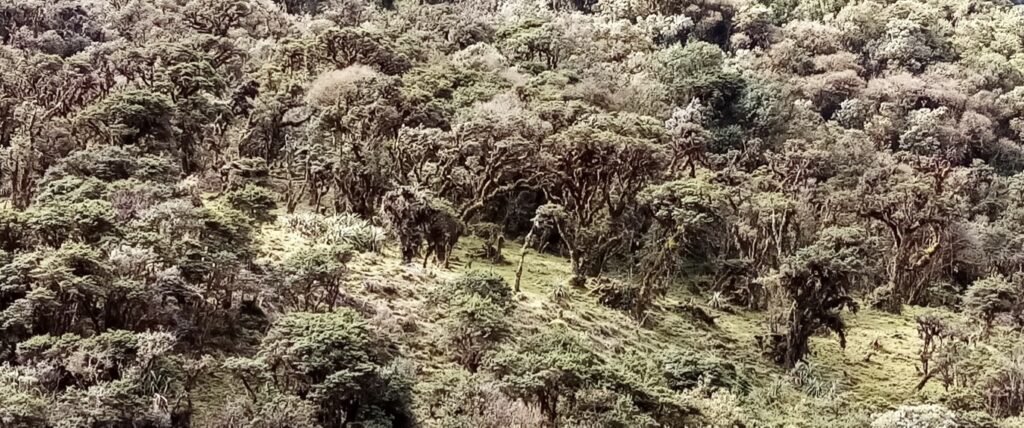
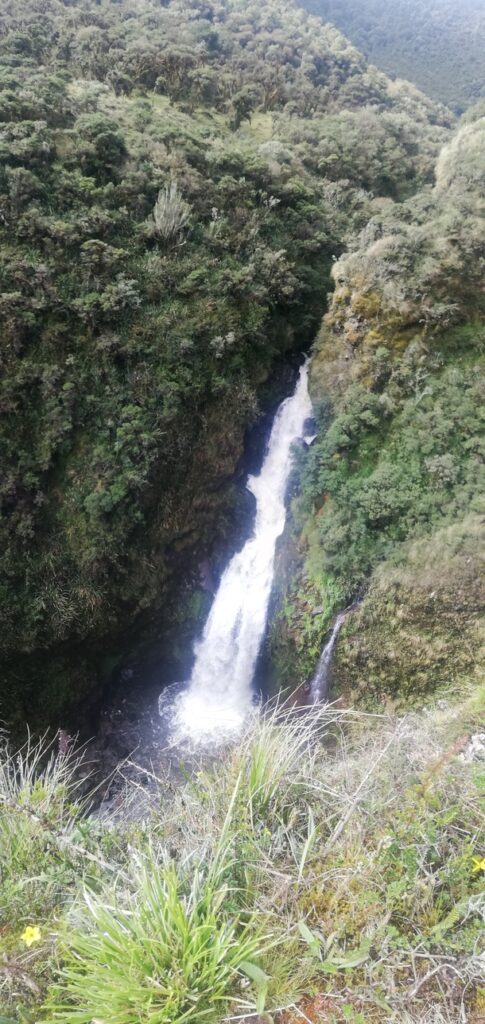
While continuing westwards, you may sometimes get the feeling you’re getting lost, but that’s not the case. You’re still on the road to Oyacachi. The next inhabited place you’ll encounter.
Just a few years ago, you really could get lost on this road. Nowadays however, regular signs confirm you’re heading in the right direction. Also a clear indication the people of Oyacachi really want you to visit their beautiful little village. As well as their natural surroundings. Ideal for ecotourism: hiking, biking, horseback riding, ….
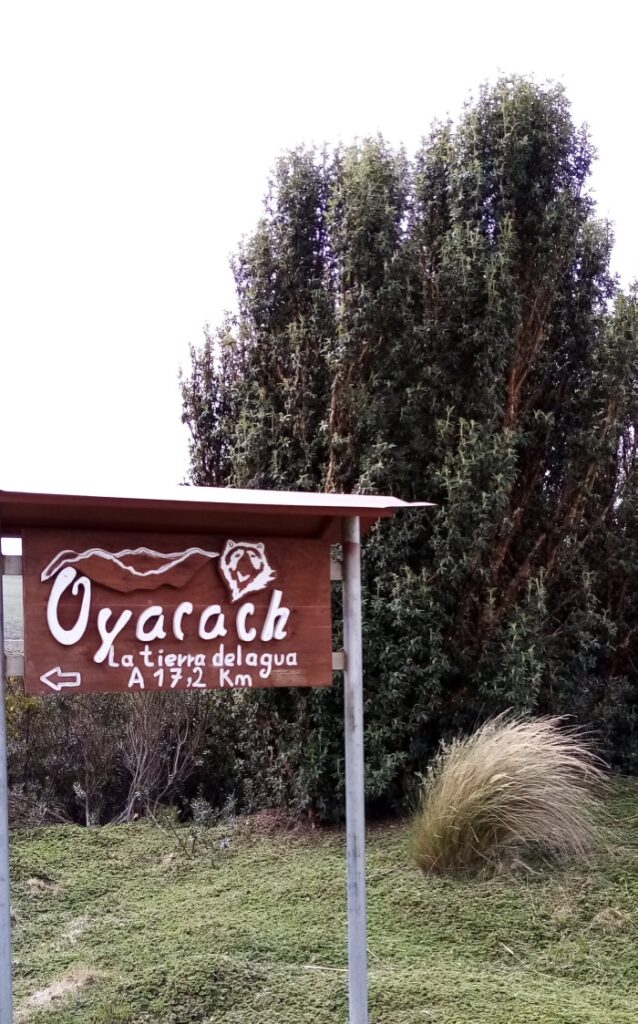
Actually you’re traveling an old historic road. In earlier times it was one of the main roads connecting the Northern highlands to the Amazon jungle.
Arriving at Oyacachi
And then suddenly, you spot the little village of Oyacachi (3140m/ 10300ft). Just appearing out of nothing.
- Note: A few kilometers/miles before you arrive at Oyacachi, you’ll pass a guard house. It’s actually one of the main entrances to the Cayambe-Coca National Park. Here, you only have to register. Then take the road to the left, that leads in about 10-15 minutes to Oyacachi (The road to the right continues on to the village of Papallacta. Only passable with a special permission).
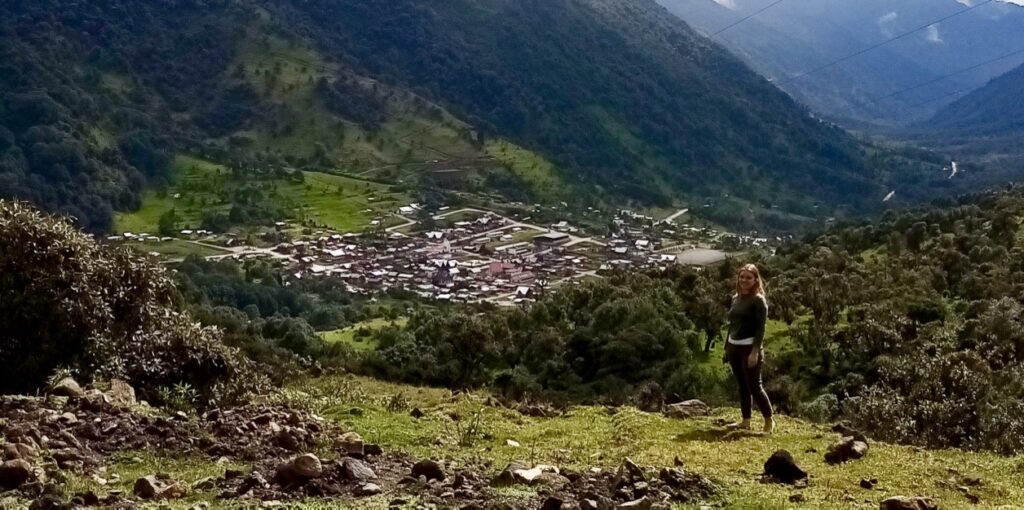
A little history to introduce your visit to Oyacachi
Like the road you’ve travelled, the village of Oyacachi cherishes its own long history.
The first settlers of this unique valley probably arrived thousands of years ago. An indigenous branch of the Cayambi.
When the Spaniards arrived in the 16th century, it took a while for them to visit the area. They preferred to stay in the highlands, avoiding going to the Amazon-jungle.
In the end it became part of the Audiencia de Quito (Kingdom of Peru), but because of its isolation, it always kept a certain independence. Something you immediately notice on your visit to Oyacachi.
- Note: Soon after Oyacachi was incorporated into the Spanish empire, a beautiful wooden statue of the Virgin Mary arrived (1591). The local inhabitants had bought it from the Spanish sculptor Diego de Robles, who was part of the famous Quito Art School. Instead of money, they paid him with cedar wood, a material he used for his art work. In a few years the statue converted Oyacachi into a pilgrimage site. Reason for the bishop of Quito to move it nearer to Quito, to a place called El Quinche, where the Virgin still houses and attracts thousands upon thousands of people each year.
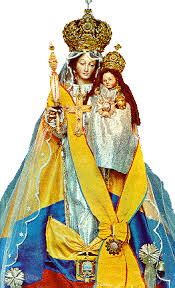
Nowadays most inhabitants of the village & surrounding area are farmers. They live on agriculture and livestock. Besides tourism, which is growing by the year.
Attractions to visit in & around Oyacachi
- First of all, the area is perfect for hiking. Like the short hike to the nearest waterfall, named Turnufakcha. Actually, waterfalls, … because the path leads ever further up to higher levels of the falls.
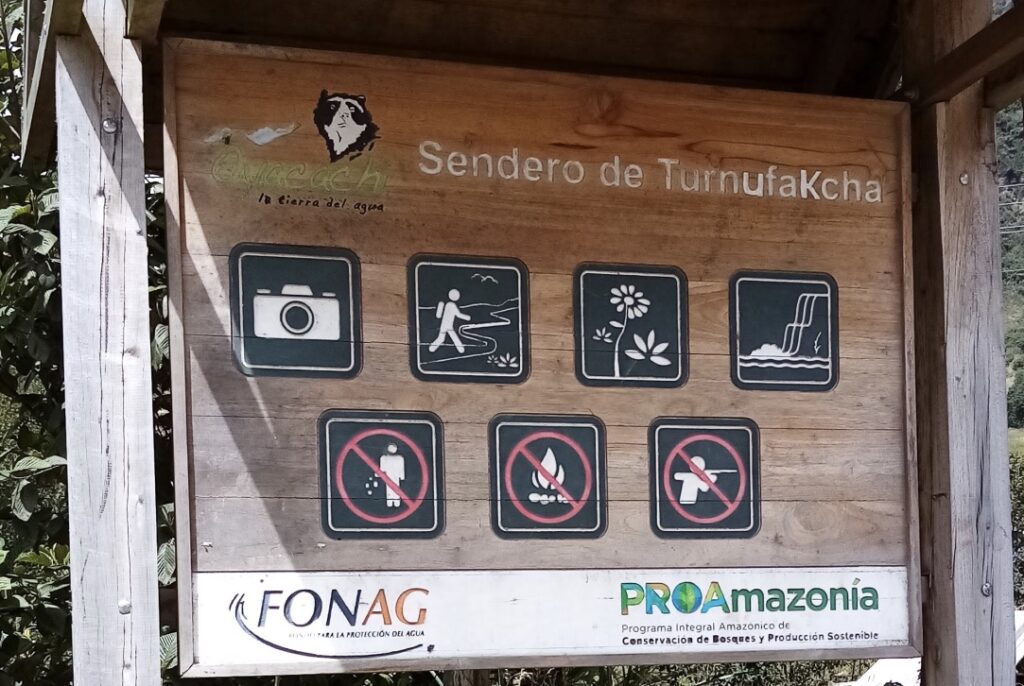
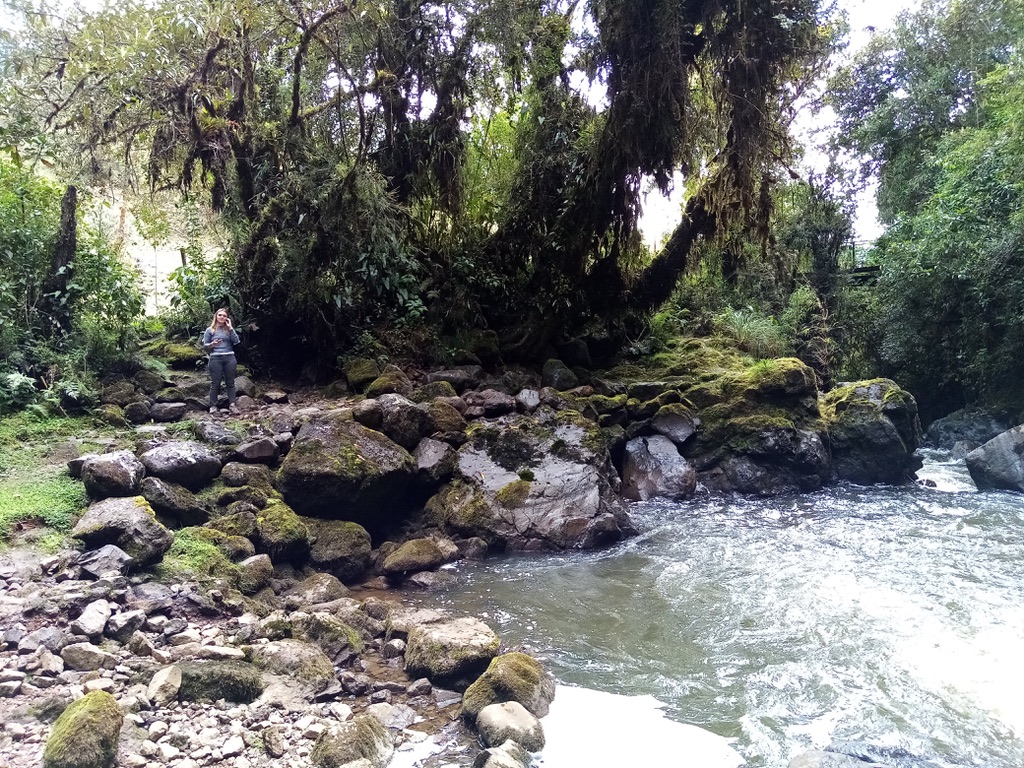
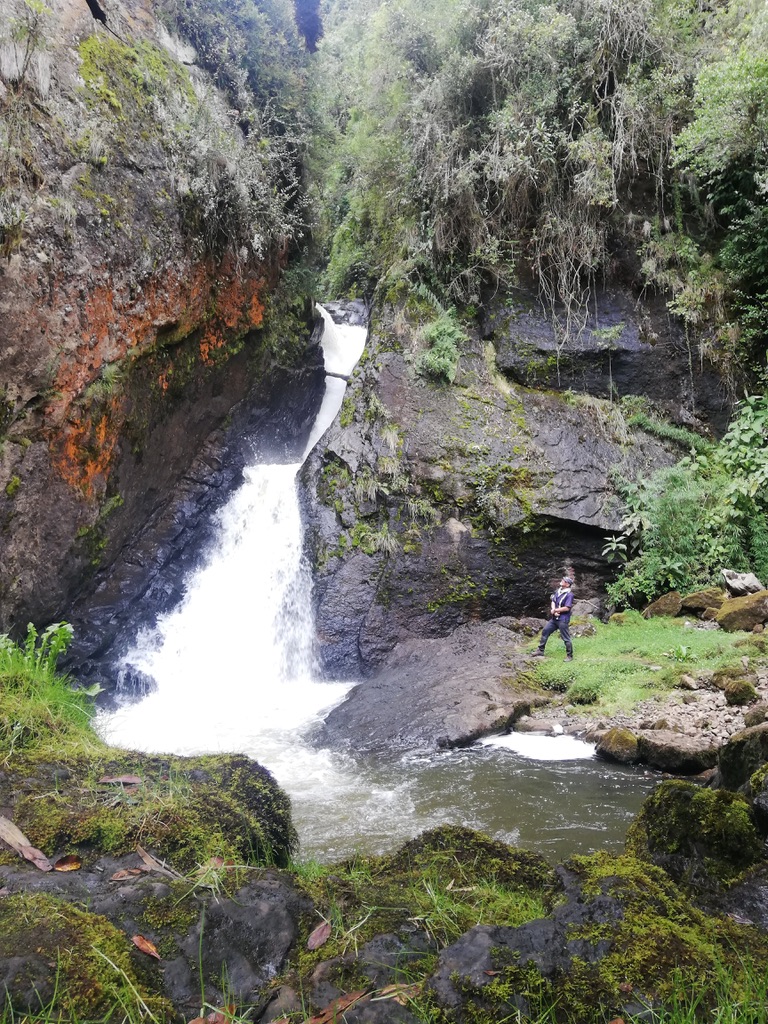
- Although Oyacachi still forms part of the eastern Andean cordillera, it has a sub-tropical feel to it. Mainly because it’s located in a unique, overwhelmingly green valley. That’s one of the reasons why it’s an ideal area for birdwatching.
- Note: Last time I didn’t see too many unknown species. On an earlier visit to Oyacachi though, with my wife Wendy, we spotted like 4 or 5 different colorful birds in one view. Red, blue, yellow. Unique birds for sure (I’m not an expert!).
- Besides special birds, the inhabitants told us about many other animals living in the area. Mammals like, for example, the Andean bear, wild cats (Tigrillo) & deer.
The valley behind…
You can cross the little village of Oyacachi in a heartbeat & continue on the main road through the valley. The Río Oyacachi accompanies you all along the way. Little wooden houses to your left & right. Most inhabitants have constructed their own bridge to be able to cross the river, to the cultivated fields on the other side.
- I don’t really know where this road ends, but supposedly there’s a way to continue on foot. A 2 to 3 day hike must lead you to a little place called El Chaco (1650m/ 5413ft), bordering the Amazon-jungle. Formally, El Chaco is the capital of the canton with the same name, of which Oyacachi is a part.
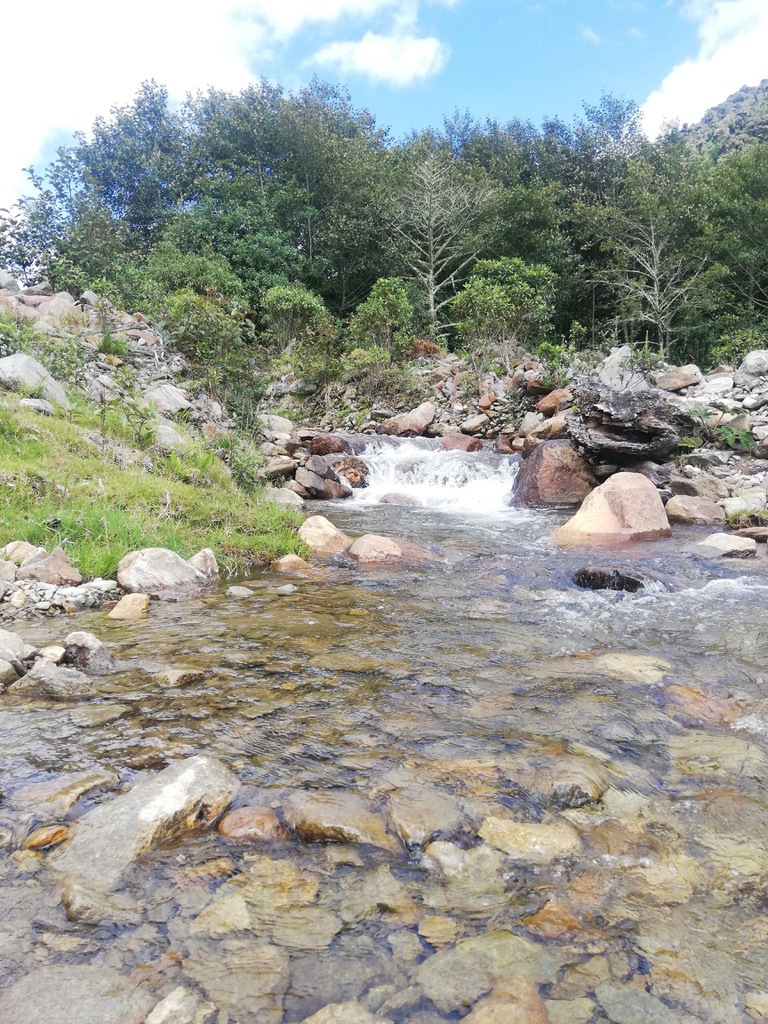
- The last time we followed the mentioned road for a mere 20 minutes (in my car), before heading back to Oyacachi. On our way back we visited the old village of Oyacachi. At this particular place, you’ll find some old foundations, besides some newly constructed ones in the old style.
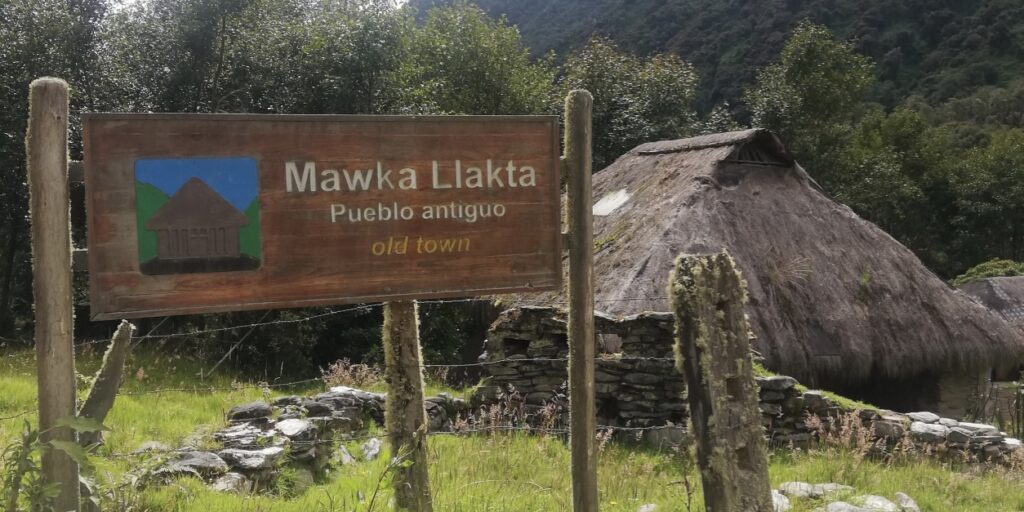
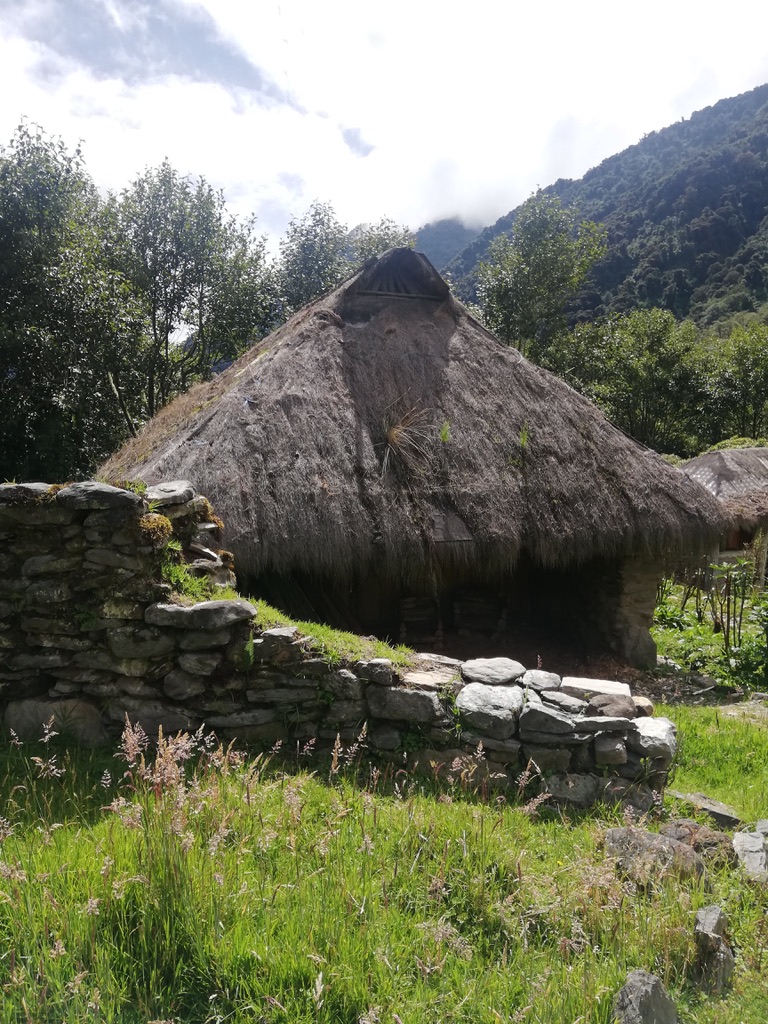
Nearby we found a small cemetery. We initially thought it was connected to the former village, but soon noticed that local people are still buried there.
The biggest Oyacachi attractions though are…
Finally, and actually the biggest attraction Oyacachi is known for, are its thermal springs. Located in the village’s center.
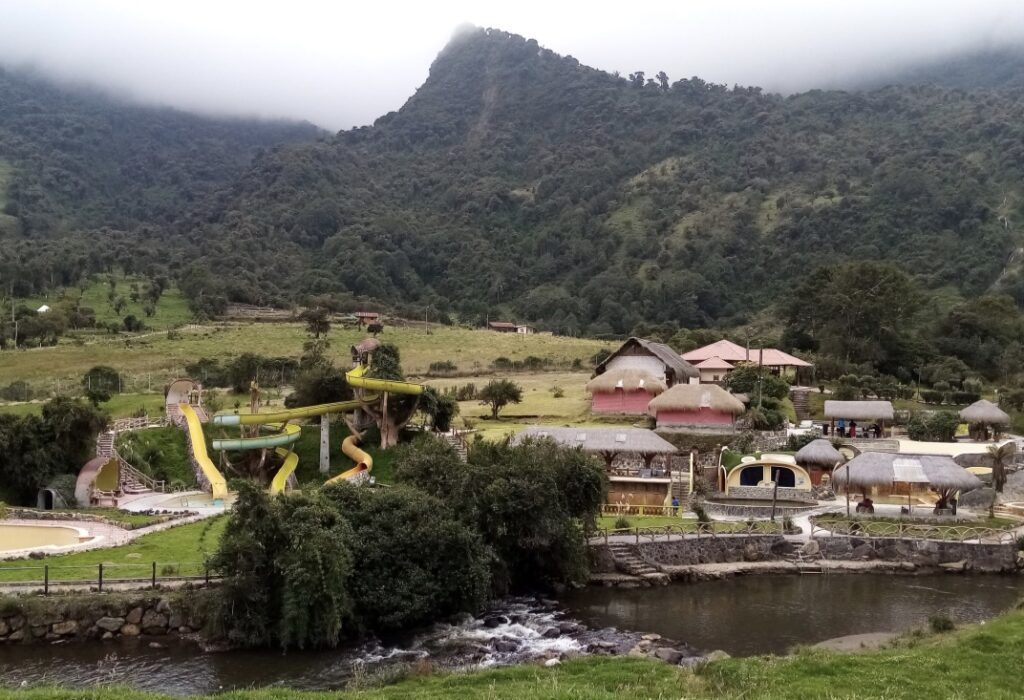
Besides several hot baths (different temperatures), you can relax in the sauna or a Turkish bath. Or else “relaxxxxx” in the river nearby.
A visit to the Thermal Springs of Oyacachi is an ideal way to end a day full of activity & adventure.
To shop
Finally, Oyacachi has its own typical handicrafts to offer. Wood works, traditionally made of alder or other kinds of wood. Mostly utensils, like spoons, cups, trays & other wares you’ll easily find in the shops near the visitor’s center.
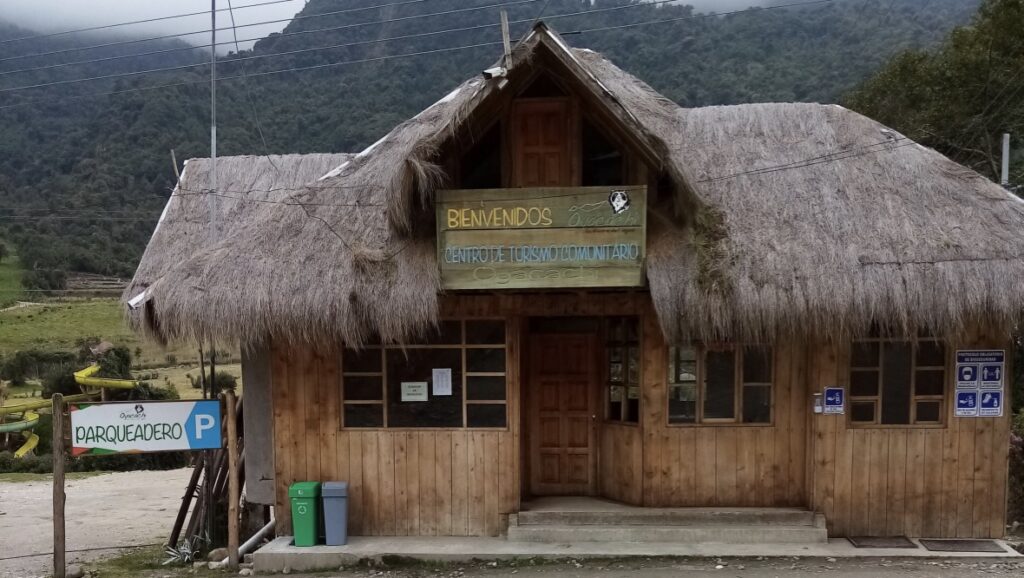
Ruta Oyacachi – Papallacta
On a special day in August 2022 we asked permission in Oyacachi – at the Visitor’s center ($5 per car) – to take the road from Oyacachi to Papallacta. A road that starts at the earlier mentioned entrance to the Coca Cayambe national park.
A wonderful experience. We were the only ones there that day. Not seeing another soul, only wildlife.
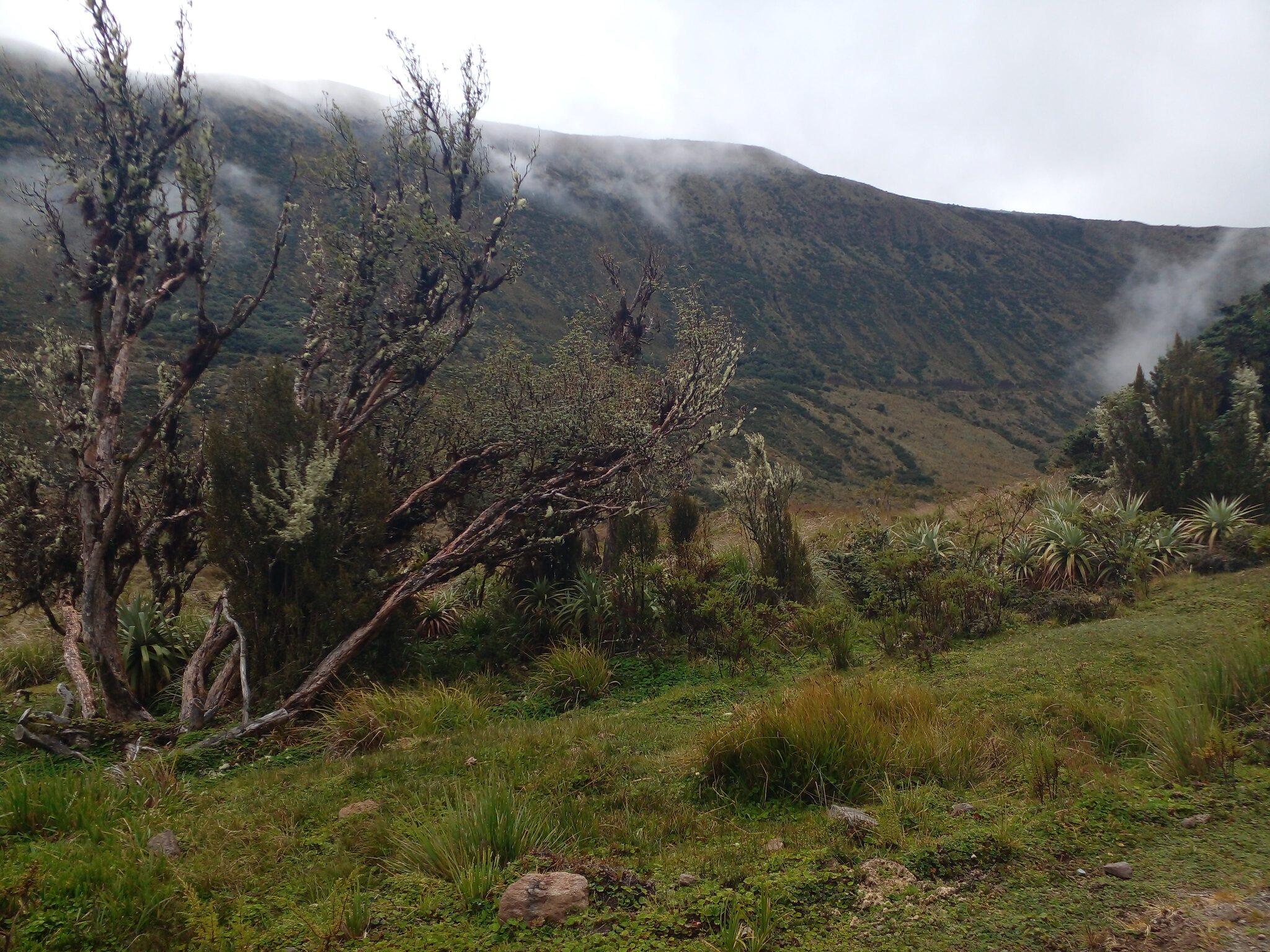
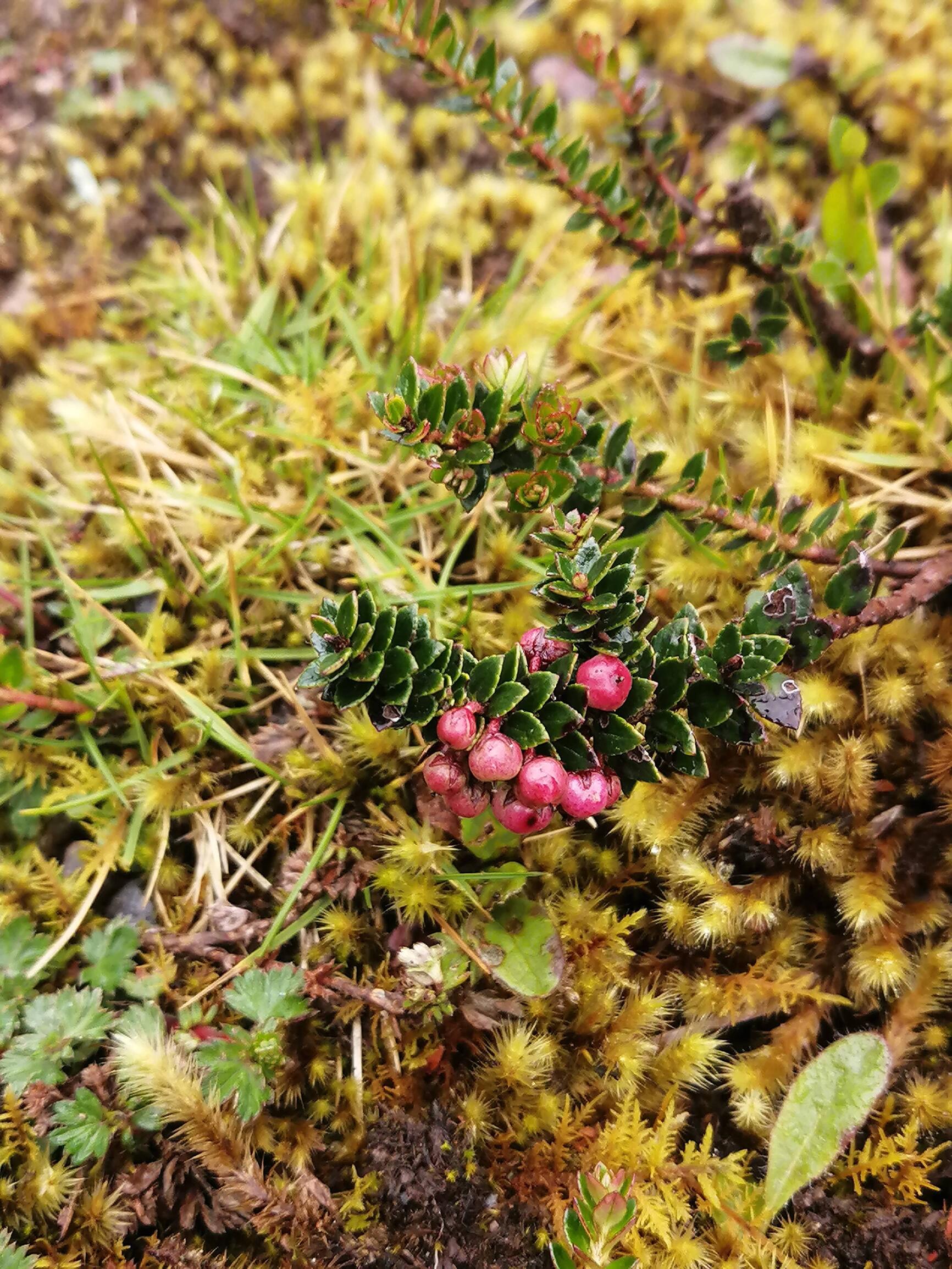
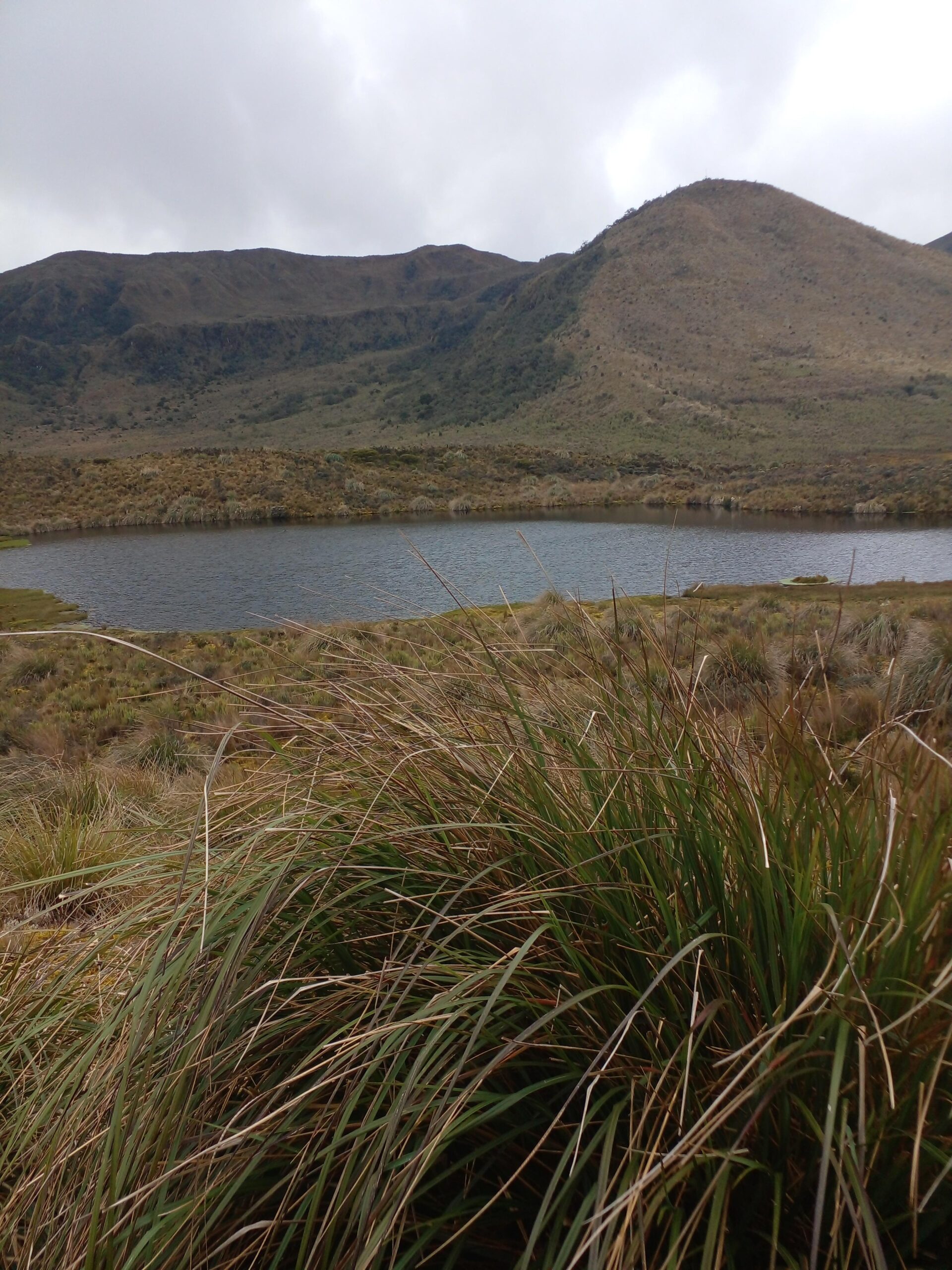
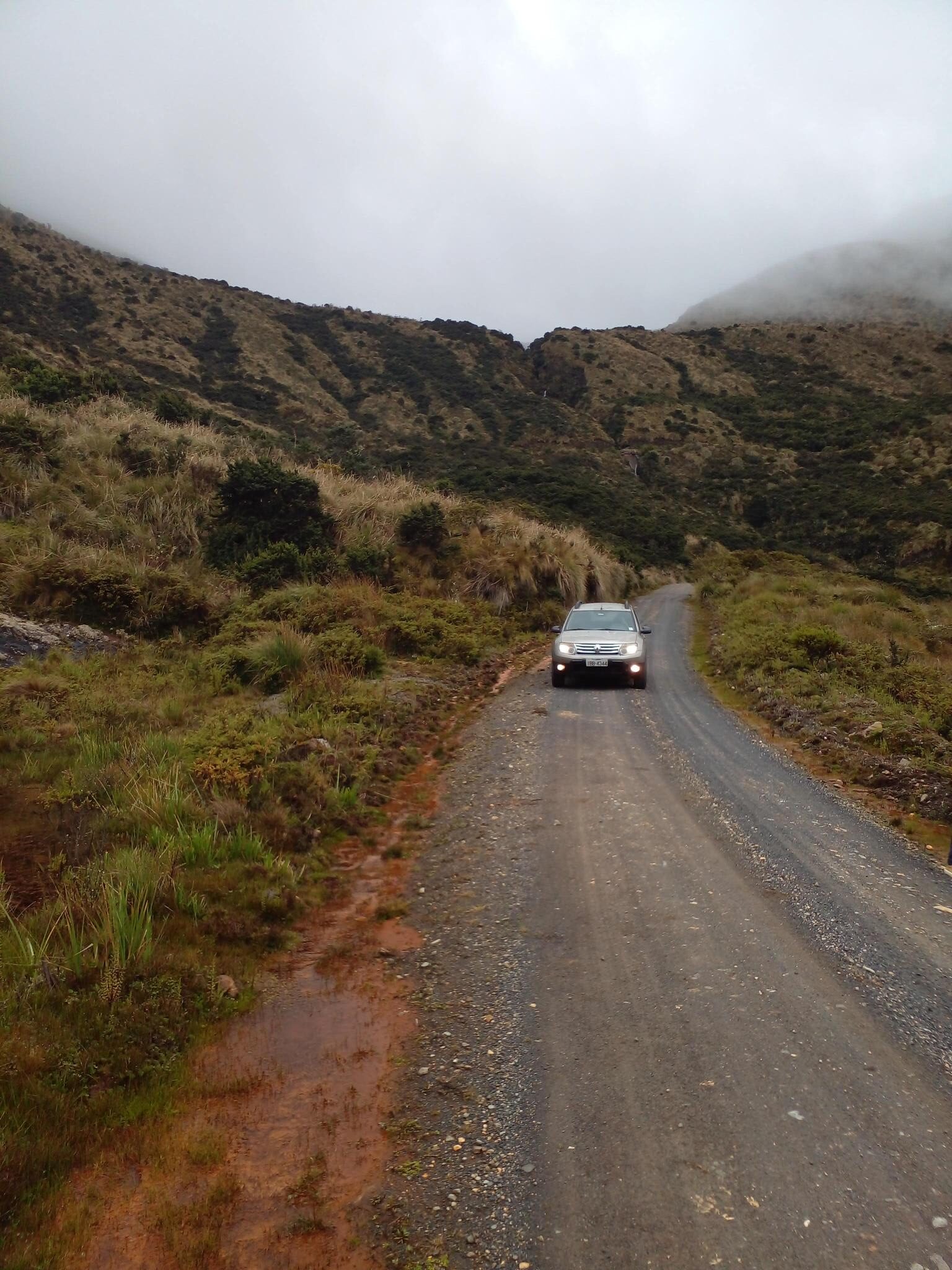
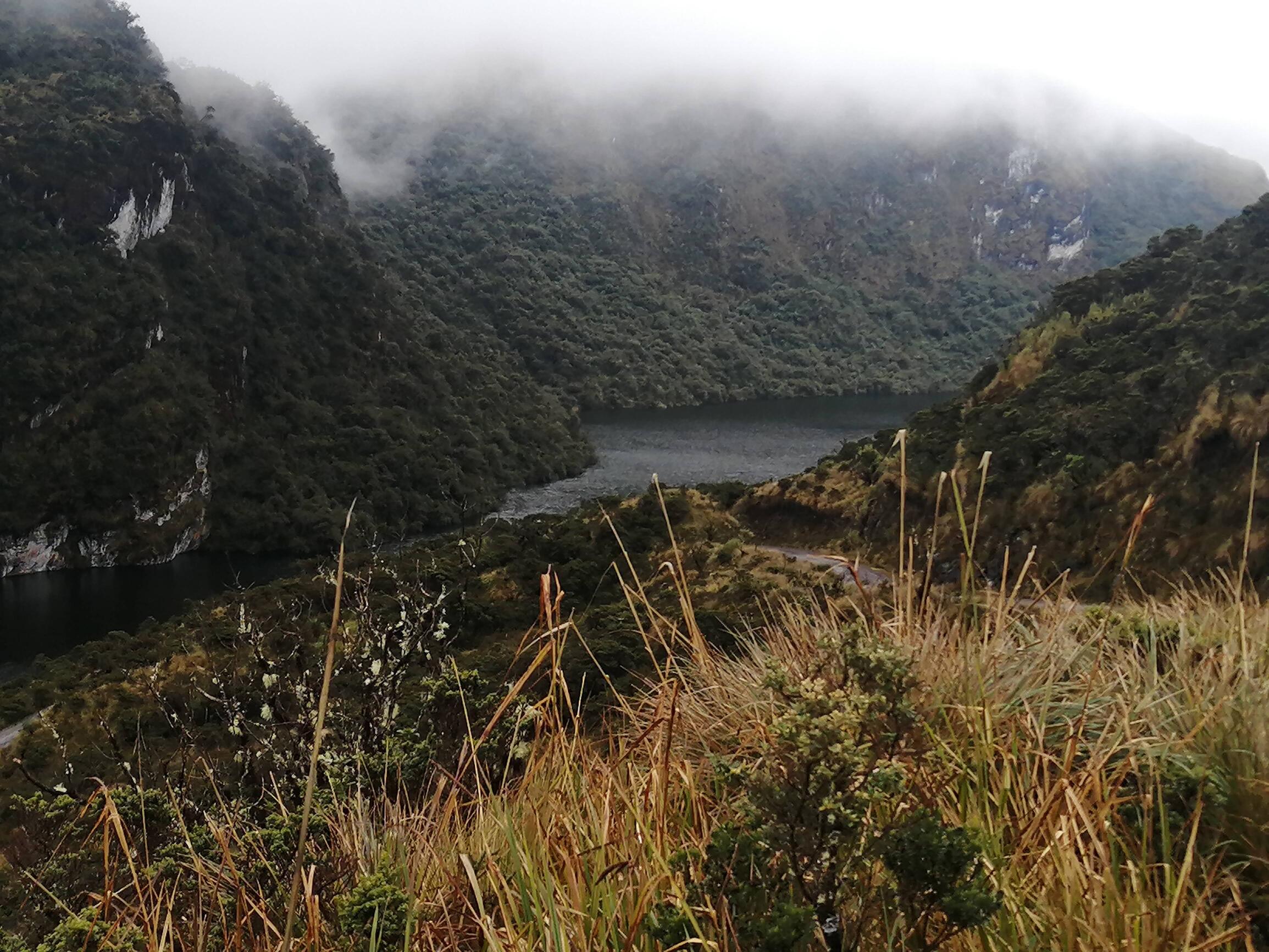
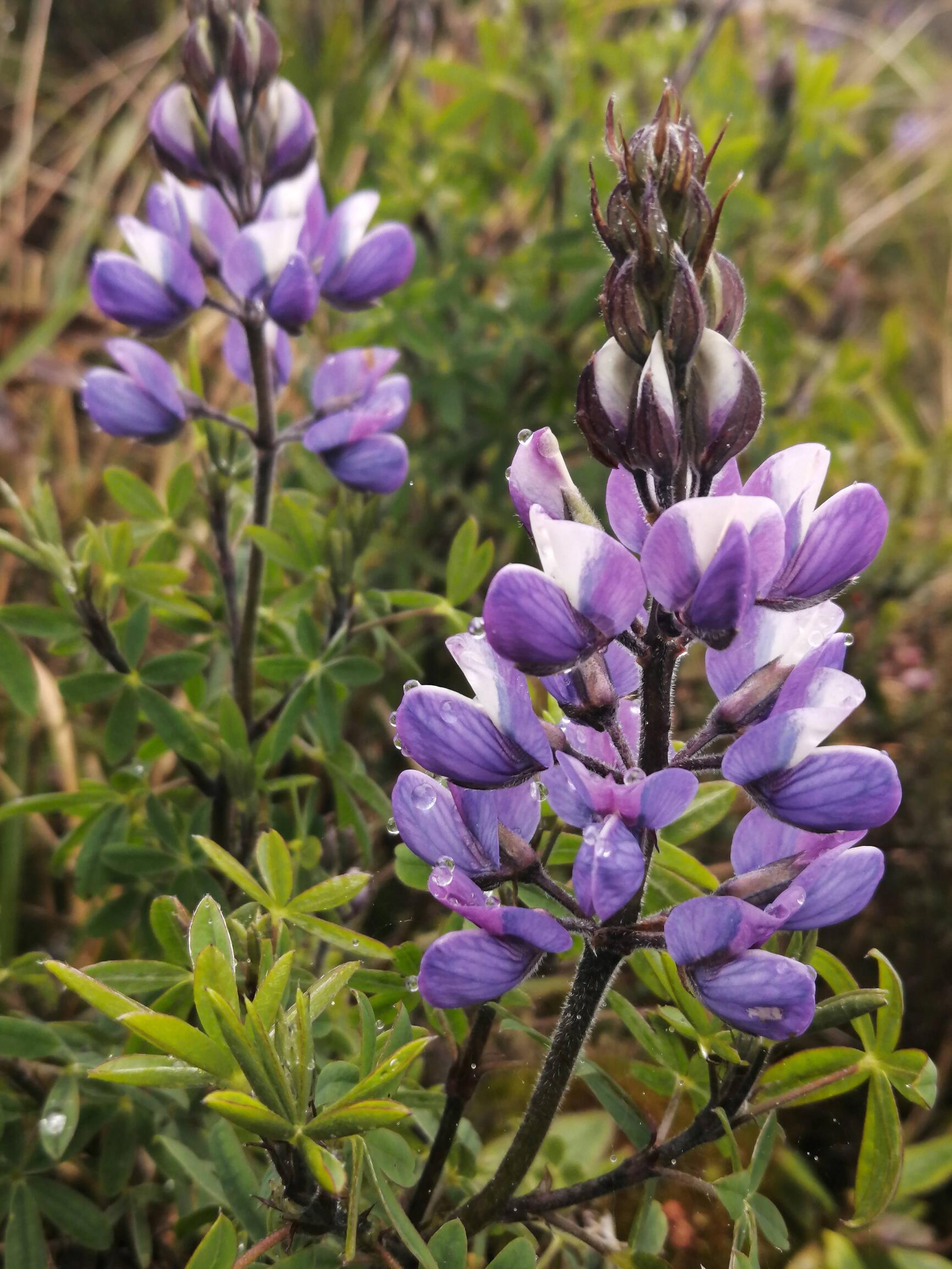
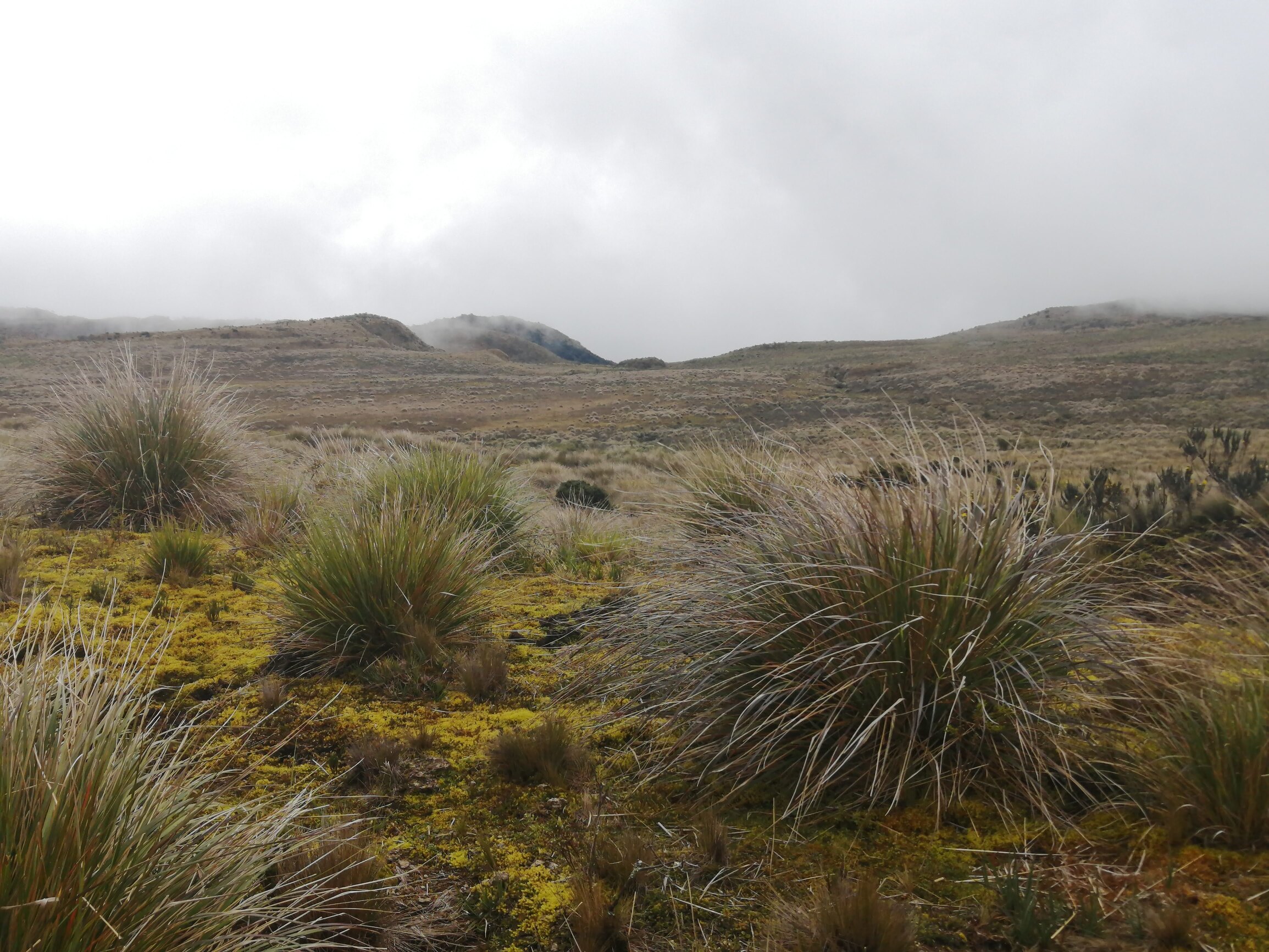
Ending up at the Termas de Papallacta. A real relaxing paradise which I recommend every visitor to Ecuador to include in its journey through Ecuador. Preferably at the end. For more info, go to: Visit Papallacta.
On this occasion we continued on to Baeza. About half an hour further to the East, on the way to the Amazonía . A subtropical area, where we stayed at Hotel Kopal, owned by a countryman. A midrange hotel, with wooden cabins in a beautiful garden and a good restaurant.
Tips & recommendations for your visit to Oyacachi
- Start early! I would say between 7-8 am, or even earlier if you want to combine the visit to Oyacachi with other attractions on the way (see below). It’s the best chance you get nice views of the Andes around you (like Mt. Cayambe). And you can be back before the clouds come rolling in or it gets dark. (If starting from Otavalo, keep in mind that it takes 30 minutes to get to the starting-point of Cangahua.)
- Look out for the road signs. There aren’t too many side roads, but you’ll never know. If doubting, ask the first person you encounter on the road (it can take a while, but with a little luck…)..
- Bring some food & drink. You can buy some on the way, but just to be sure. On the weekends some popular restaurants open their doors in Oyacachi. During weekdays however most of them are closed. At our Hotel in Otavalo we can arrange a lunch box for you (see below).
- The area is ideal for a picnic. In & around Oyacachi itself, or on the road.
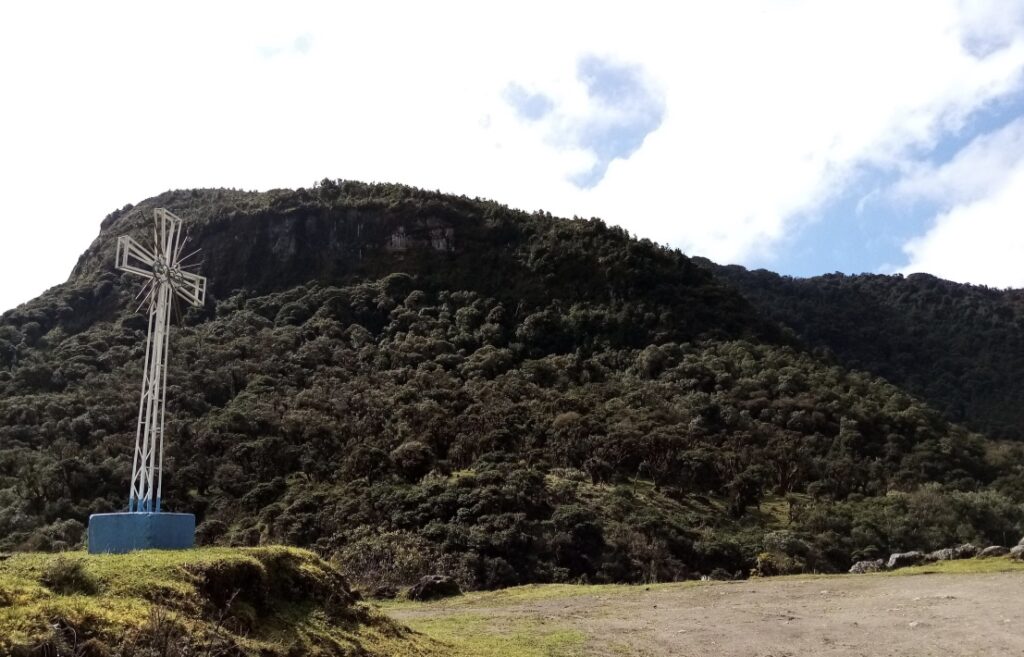
- Be prepared for every type of weather: cold, warm, sunny, rainy.
- Protect yourself from the sun (at least Protector 50).
- As Oyacachi is located well over 3000m/ 10000ft be prepared to “feel” the altitude. In other words, the fact there’s less oxygen. Something you’ll notice sooner when hiking or on a climb, but sometimes also coming out of a warm bath. Control your breathing, take a regular break & you’ll be fine.
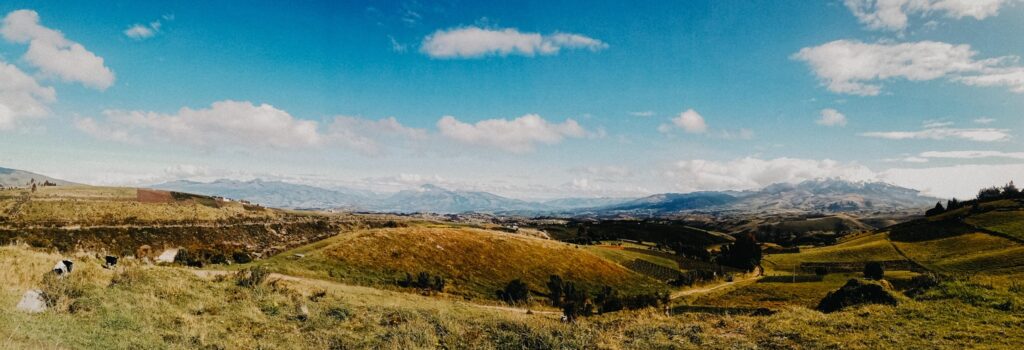
How to get there (if you don’t have your own car)
By Taxi:
If you don’t have your own car – or haven’t rented a car or motorbike – the best way to visit Oyacachi is by taxi.
Something we can arrange for you at Hotel Doña Esther/Restaurante Árbol de Montalvo. A (half a) day tour from Otavalo with a friendly, professional driver/guide at a good price.
- In a normal car there’s room for max 4 pax. If you travel with more people, we can arrange for bigger transport – a mini-van or bus – provided by a local company.
- IMPORTANT: We can only provide this service to our hotel guests.

Although you have to reserve a full day for the Oyacachi-tour, it’s possible to combine it with other attractions on the way, like:
- A stop at the alternative Mitad del Mundo monument in Cayambe (which you pass on the way to Pambamarca).
- If you start early, you can even combine it with a visit to the ancient ruins of Pambamarca (a long day-trip for early birds).
- And finally, it is possible to take the Oyacachi-route to end up at the Hot Springs of Papallacta. Taking the Oyacachi-Papallacta road through the Coca-Cayambe Park (see segment above). A real adventure, you will never forget.
- We can prepare a take-away box lunch ($6.00 each) for you at the hotel.
Contact us:
Just write to us with your questions & wishes, and we will help you out:
Alternatively, for more information or a reservation in our hotel and/or restaurant, you can use the Whatsapp Button below:
*****
- For more general information about Ecuador, you may join my: Visit Ecuador Facebook Group
For other Things to do in & around Otavalo, go to: Otavalo Attractions
For an overview of all travel posts of my blog, go to: My Home Page

